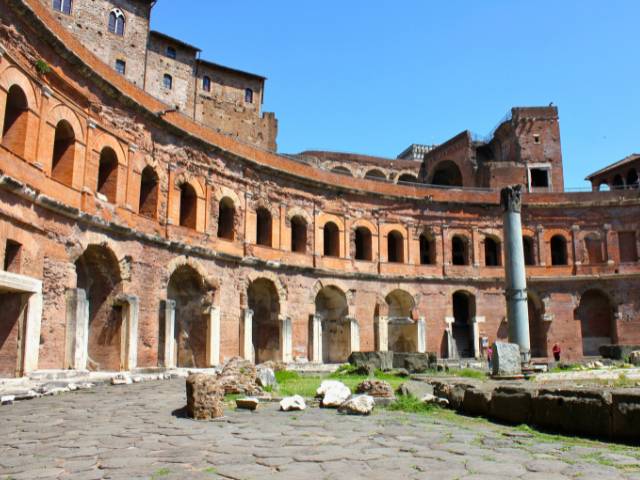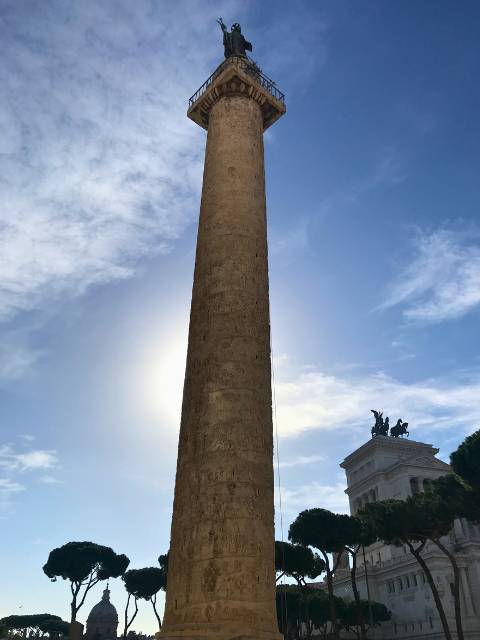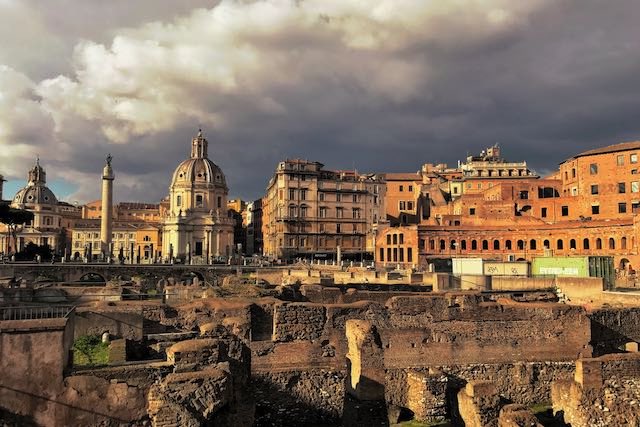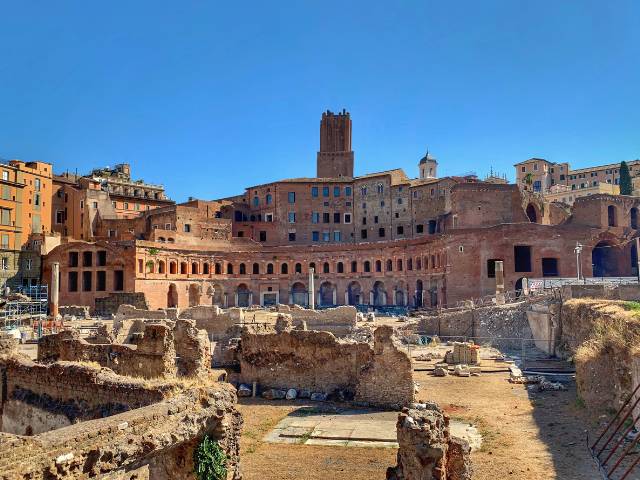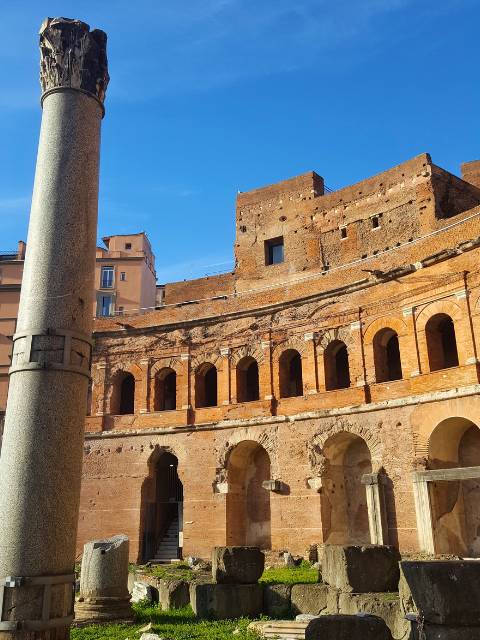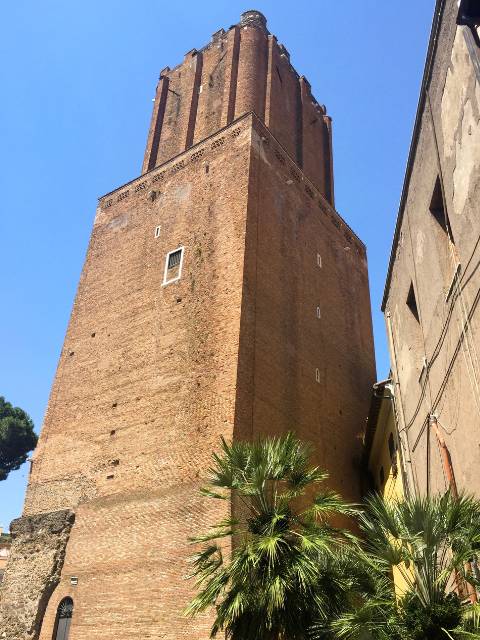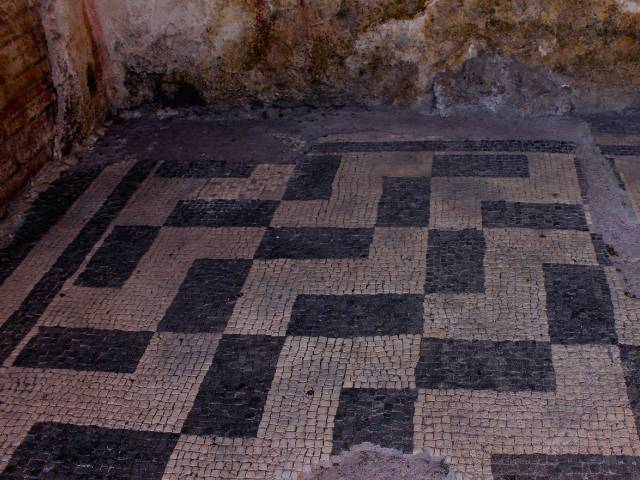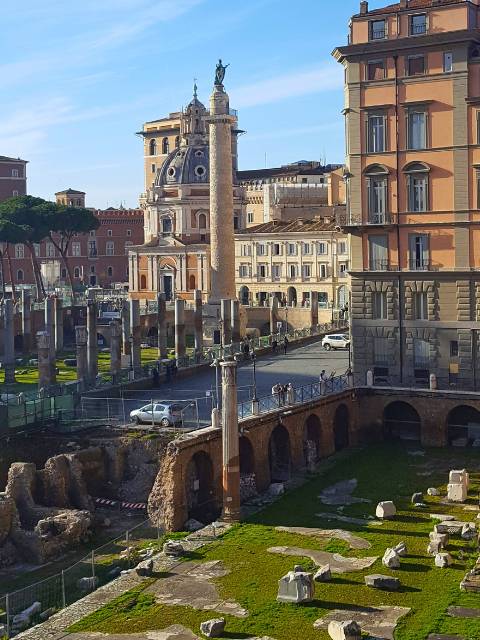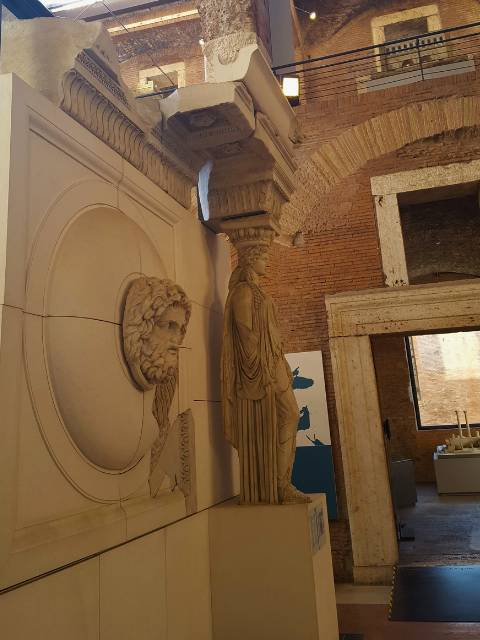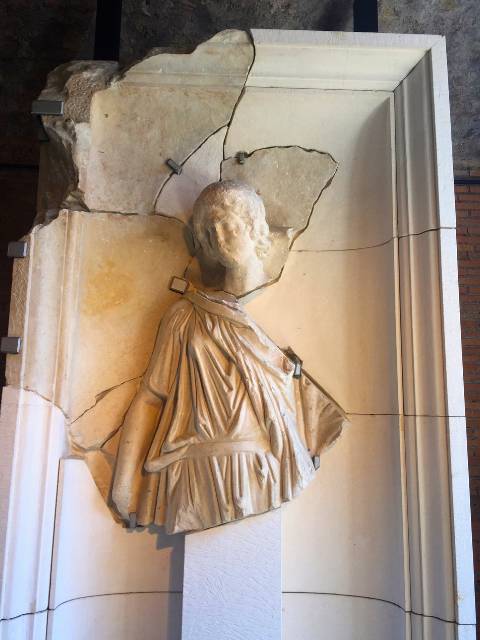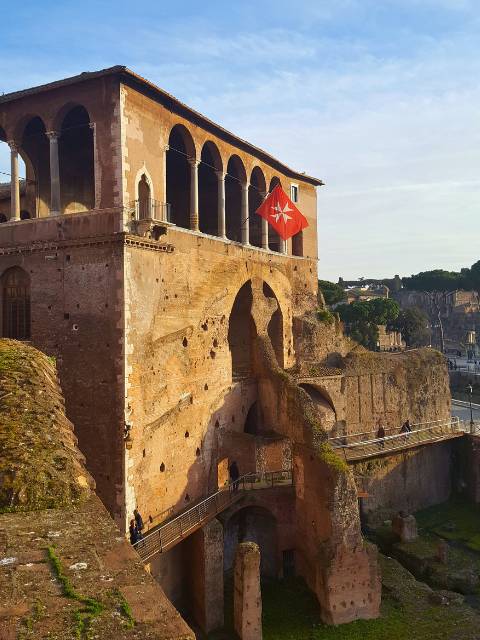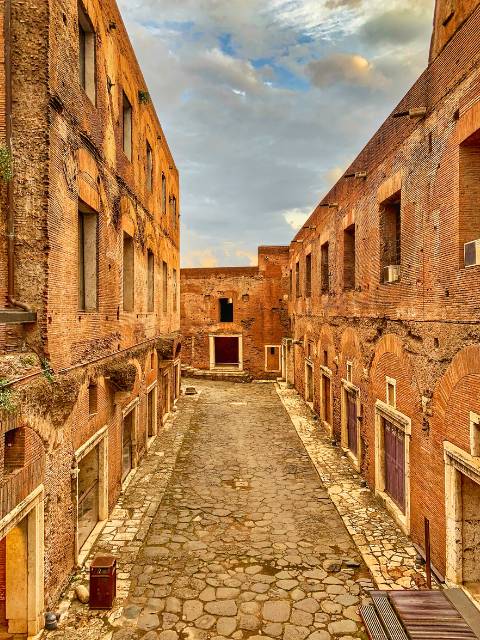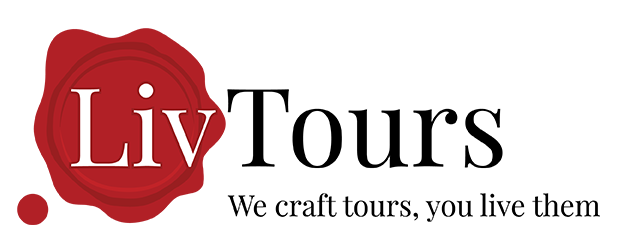- Sign up & get a FREE ebook Subscribe NOW!
- Romewise Home Page
- Museums in Rome
- trajans market museum
How to Visit Trajan's Market Museum in Rome
Have you been thinking about visiting Trajan’s Market Museum in Rome?
Join me as I run through everything you need to know about this historical site that’s often referred to as Rome’s first official mall!
Everything you need to know about visiting the Trajan Market Museum
If you’re a fan of ancient Roman history, then you’ll absolutely adore the Museum of the Imperial Forums.
It functions as both a museum and an archaeological site, displaying everything from old columns to impressive sculptures.
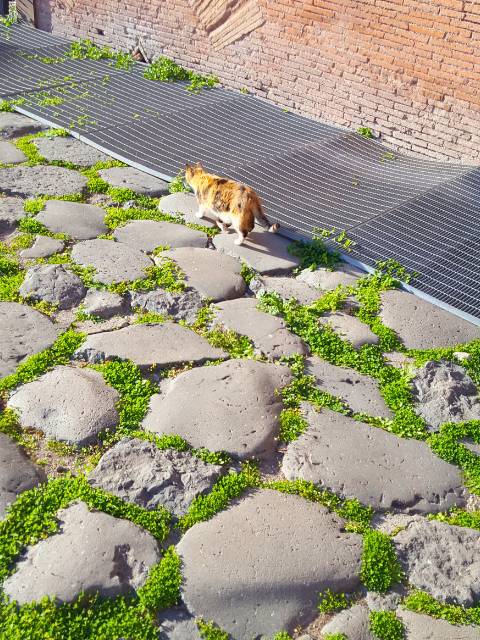 The addition of some cats who roam the ancient paving stones is never going to be a bad thing in my book!
The addition of some cats who roam the ancient paving stones is never going to be a bad thing in my book!But the main draw (in my book!) are the remains of Trajan’s Forum.
Designed to impress visitors with its sheer size, the forum is an important reminder of just how influential emperor Trajan was.
If you’re wondering what’s inside this historical gem (along with how and when you should visit!), then stick with me.
On this page we'll be talking about:
- Emperor Trajan and his Forum
- The history of Trajan's Market complex
- The Museum of the Imperial Fora (Museo dei Fori Imperiali)
- How to visit Trajan's Markets Museum
Emperor Trajan and his additions to Imperial Rome
Emperor Trajan ruled over the Roman Empire between 98 and 117 CE and was part of Rome’s five 'Good Emperors'.
These rulers created a prosperous period for the Empire during the Nerva-Antonine dynasty (96-192 CE), where each emperor succeeded the previous one peacefully and could focus on expanding and strengthening the empire.
During his time on the throne, Trajan introduced a stellar program of public works.
Not only did he reduce taxes and introduce a welfare program for poor children, but Trajan oversaw the construction of countless bridges, aqueducts, and harbors to improve trading.
He also completed renovated the Circus Maximus, replacing the wooden stands with solid stone structures.
Dacian Campaign
Trajan would not have been an emperor of Rome without also directing military campaigns.
His primary campaign was against the Dacian people, who lived in a region on the edge of the empire's boundaries roughly corresponding to modern day Romania.
The Dacians had been a constant nuisance for decades, threatening the security of the empire.
Dacia also had a huge amount of iron, copper and gold which the Romans had a shortage of following years of unrest under previous emperors.
Trajan initially fought the Dacians for a year, after which peace was reached with the Dacian leader complying.
However the Dacians went back on their agreement and Trajan returned a few years later to finish the job.
This time Trajan was entirely successful, with Dacia and all their resources fully controlled by the empire.
The triumphant conquering of Dacia provided an incredible amount of land for Roman settlers along with access to salt mines and a lot of gold.
No matter what season you visit Rome, here are 4 essential things we recommend never leaving home without:
Forum of Trajan
The Roman Forum of Trajan was the last of the city’s Imperial Fora that were built in Rome.
It was designed to be a public square for trade and business, expanding the original Forum area, and was inaugurated in 112 CE.
Built using the riches from Dacia, the new forum was huge, with parts of the Quirinal hill and Capitoline hill excavated and removed to make space for it.
🏛️ Rome's greatest museum is waiting for you 🏛️
Explore an unparalleled collection of ancient art at the Capitoline Museums, the world’s oldest public art collection. Guided by an expert, marvel at iconic works like the Capitoline Wolf and Dying Gaul, and enjoy stunning views over the Roman Forum. Situated on the historic Capitoline Hill, where Michelangelo’s Piazza del Campidoglio now stands, this tour offers a unique journey into the grandeur of ancient Rome’s past.
In the forum there was a big open space paved with marble, with covered walkways lined with columns all around it, a triumphal arch, an administrative building known as the Basilica Ulpia, a temple and two libraries that housed Latin and Greek documents.
At the forum entrance, there also stood an impressive equestrian sculpture of Trajan that greeted visitors, leaving no doubt as to who was responsible!
Trajan’s Column was tucked between the libraries, with detailed plaster work winding around it telling the story of the Dacian campaign.
Alongside the forum was the vast complex of the Markets of Trajan itself.
The History of Trajan's Market Complex
Trajan’s markets (mercati di traiano in Italian) were a large complex in ancient Rome that are thought to have functioned largely as an ancient mall, although there is some debate about this.
There is evidence of multiple shops, stalls and warehouses, but the monumental complex spanned multiple levels.
It also seemed to function as a center for food rationing and distribution, as well as various government activities.
The upper level of the market was occupied by offices, and the Great Hall was typically used as the main office for administrative activities.
Trajan's markets were built alongside Trajan's forum, built into the side of the Quirinal hill, and survived even after the western Roman empire fell in 476 CE.
After the fall of the Roman Empire
When the western Roman empire fell (the eastern side focused in Constantinople survived much longer), Trajan’s markets and forum were left in an unused part of Rome.
Much of the wonderful marble flooring had been removed to be reused in new buildings by the 9th century, the lower levels of the market were filled in and covered up, and slowly the area was covered by soil and used as farmland.
Later the buildings of Trajan's markets were taken over by various rich families and changed hands several times.
The Torre delle Milizie tower was added around 1200 (the exact date is unclear) and the entire market area was fortified when it was taken over by the Caetani family in the early 1300's.
The wealthy Conti family came into possession of Trajan's markets a few decades later and held it for over 200 years before the complex was turned into a monastery in 1574.
In 1885 the newly formed Italian state took ownership of the complex, initially using it as military barracks, before excavations started to restore the ancient site to it's original state, removing all the amendments made over the centuries.
Ready to plan your trip?
Book your train
Planning to travel between cities in Italy and other parts of Europe?
Use Trainline to see all the different options available across the different rail companies.
Find your hotel
Find your perfect place to stay in Rome.
Use Booking.com to choose between hotels, guesthouses, and self-catering apartments in neighborhoods throughout the Eternal City.
Buy your TurboPass
Purchase the convenient Turbopass and visit all of Rome's top attractions including the Colosseum, Pantheon, and Vatican.
With one handy pass, it's all included.
Museum of the Imperial Forums
A major excavation of the Imperial forums in central Rome was undertaken by the Fascist regime in the twentieth century under Benito Mussolini between 1928 and 1934.
This started with the markets of Trajan (which was when this official name was first applied to the area).
Once the Fascist regime cleared this area, they uncovered the East Colonnade and the Hemicycle which revealed an incredible number of ancient artifacts.
After this, excavation orders were made for the Western Basilica and the area around the West Library.
As the excavation continued, the lower interior section of the basilica was re-erected to connect Piazza Venezia to the excavated remains.
The work stopped and then World War II and the fall of Mussolini meant the area was left alone.
It was not until the 1980's that work restarted and an enormous excavation project was funded.
The Imperial Forum Museum eventually opened in 2007 and is dedicated to showcasing the history and architecture of the entire complex, including all the various forums that make up the Imperial fora as well as Trajan's markets.
Trajan's Market is just one of the many other ancient sites in Rome - take a look at some of these here:
Trajan's Market Museum - Museum of the Imperial Fora
The Imperial Forum museum collection includes elements of architectural and sculptural decoration, ancient structures, and historical artifacts.
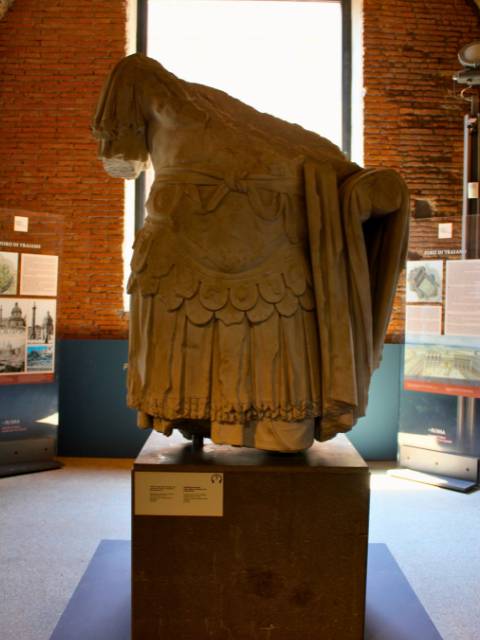 The first set of rooms when you enter the museum showcase the many finds from the different Imperial forum areas
The first set of rooms when you enter the museum showcase the many finds from the different Imperial forum areasBut the main draw is the chance to walk through the market complex as it may have looked in Roman times, up and down the different levels.
You’ll also spot reconstructions, an impressive collection of ancient jugs, and micro-exhibitions on the history of the individual forums.
The perfect 3-day itinerary in Rome
Trying to figure out how to organize your visit to Rome? I've got the perfect 3-day itinerary for first-time visitors (or those who have not been here in a while.) It works for a 2.5 day visit as well.
In my 3-day itinerary, you'll see all the major must-see Rome attractions like the Vatican, Colosseum, Trevi Fountain, Pantheon, Piazza Navona, Spanish Steps, and much more.
And if you have more time, or want suggestions for extra/other things to do, you'll find that there too.
Visit my page with the best 3-day itinerary in Rome for first-timers.
What there is to see inside the Trajan's Markets museum
After walking through the ticket office, you come into the great hall.
This has been repurposed to act as a large exhibition space, leading to a number of side rooms.
The visit route then takes you outside to walk through several levels of the ancient complex.
Inside the main section of the museum, you’ll find areas focusing on the different forum areas, with the Forum of Iulium (Caesar), Forum of Augustus, Forum of Vespasian, and the Forum Transitorium.
Oh, and the Forum of Trajan, of course!
You’ll want to keep a keen eye out for the large, decorative pieces in the Forum Iulium and the view of the Forum of Trajan from multiple levels.
I recommend heading to the highest level for the best views!
If you look out from this vantage point, you’ll be able to see the Vittoriano monument, as well as the Capitoline hill and Colosseum in the distance.
When you follow the museum route, you’ll get to an ancient road from Trajan's era where you can see the Torre delle Milizie and the site’s medieval fortress elements.
From here, you can head down to the Via Biberatica, walk through a collection of ancient insulae buildings (with their original brick-faced walls!), and see the Grand Hemicycle.
The Grand Hemicycle is primarily known for its striking friezes and statues, but you’ll also find the impressive statuary of the Dacian prisoners here.
There are two large rooms that bookend the Hemicycle, and you can walk through each room as you work your way across the large complex.
How to visit Trajan's Markets Museum
The Trajan’s Market Museum is open every day between 9:30AM and 7:30PM.
It only closes on January 1 and December 25.
Full price adult tickets are currently €15.50 per person when bought in advance, but if there are any temporary exhibitions running you may be charged more.
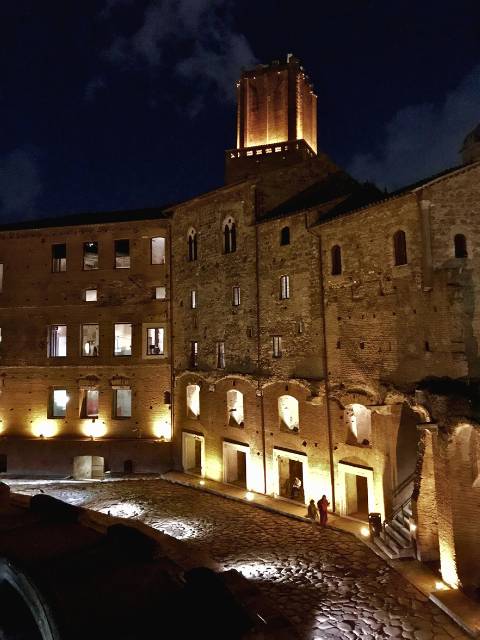 Normally the museum is not open at night, but keep an eye out for special openings during your visit
Normally the museum is not open at night, but keep an eye out for special openings during your visitThe closest Metro station is Colosseo, which is approximately 10-15 minutes walk down Via dei Fori Imperiali and then up to the entrance on Via Quattro Novembre.
If you’re struggling, Google Maps is your best friend!
However, it may be better to get one of the many buses that stop closer to Piazza Venezia for a shorter walk.
Seeing Trajan's Market for free
I recommend going for the full museum experience if you’re able to, but you can technically see the market and forum from the street if you don't have time to explore.
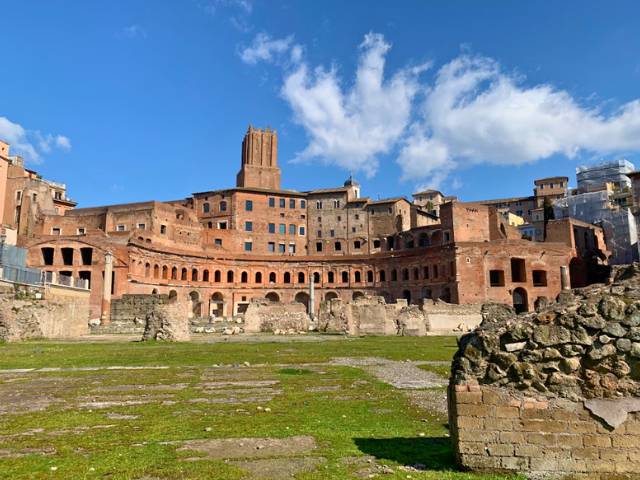 From Via dei Fori Imperiali you can get a good view of the market layers and some of the ancient forum
From Via dei Fori Imperiali you can get a good view of the market layers and some of the ancient forumYou’ll see the forum if you head to the pedestrian area that’s right off Via dei Fori Imperiali.
The market is right by Trajan’s Column so it’s pretty hard to miss!
If you have time, head back during the evening as the area is gorgeously lit up.
Romewise's Top Travel Resources
Ready to book your trip to Rome? Take a look at these helpful links to companies we use and trust:
- Keep your travel spending simple with the Wise card, which removes all the worry about exchange rates and high transaction fees all over the world
- Search for and book your perfect accommodation
- Our complete guide to what to pack for Rome
- The number one travel accessory, a multi-point travel adapter and voltage converter
- Browse a huge range of tours in Rome and beyond
- Experience unique tours and special access to Rome's most popular sights
- Protect yourself with comprehensive travel insurance
Within this post there are some affiliate links for products and services. For more details about our affiliate policy click here.
Get your 100% free Rome trip planner now!
Simply sign-up today for our free newsletter and get the Romewise Quick Start guide to Rome:
We are committed to respecting your data. Click for our Privacy Policy.
Comments? Questions? Suggestions?
Please come over to the private Romewise Facebook group and join in the conversation.
You will often find me there, happy to answer your questions / comments!
You will also meet other Rome lovers and experts, too.
What are you waiting for?
- Romewise Home Page
- Museums in Rome
- trajans market museum

